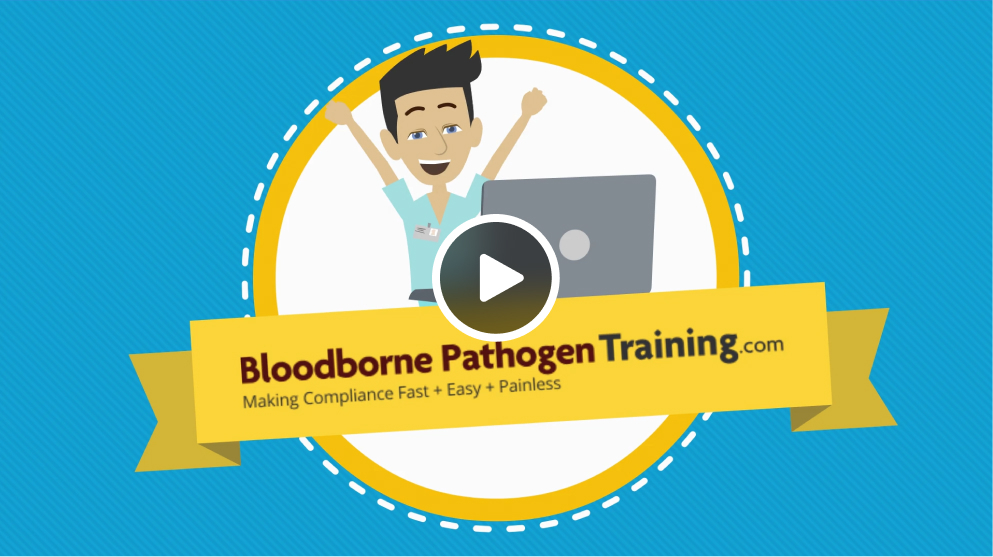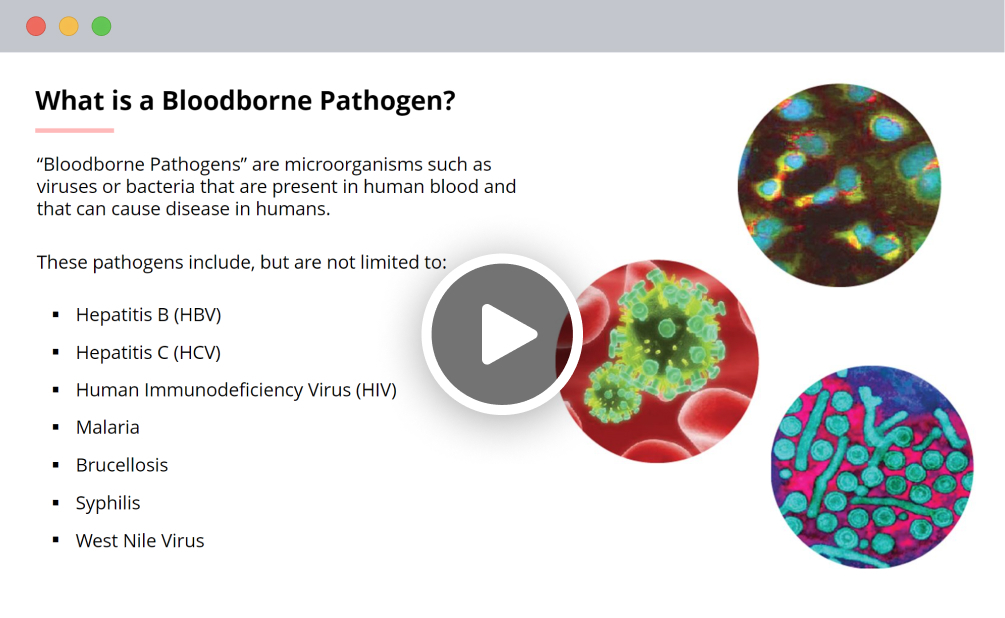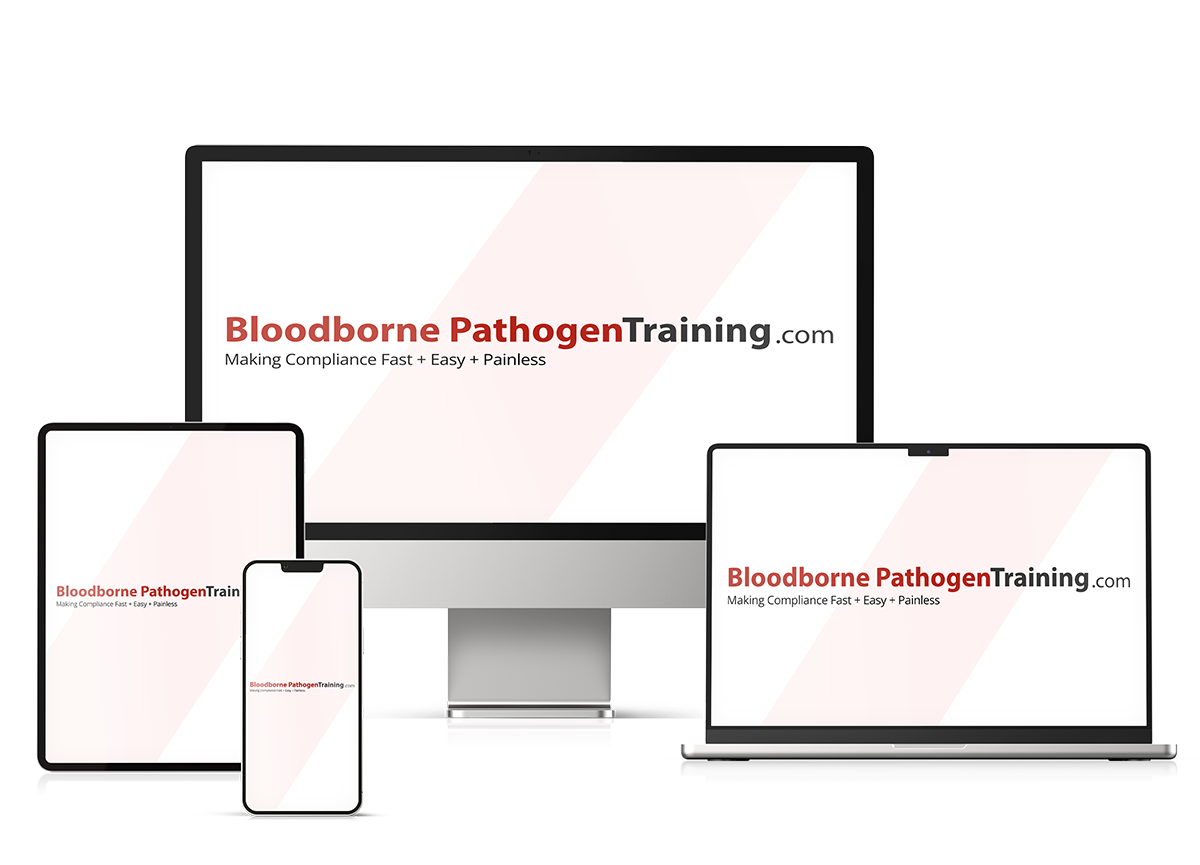What is Bloodborne Pathogen Training?
In the United States, the government agency responsible for worker safety is the Occupational Safety and Health Administration otherwise known as OSHA.
OSHA’s Bloodborne Pathogens standard is a federal OSHA regulation (29 CFR 1910.1030) that prescribes safeguards to protect workers against the health hazards from exposure to blood and other potentially infectious materials, and to reduce their risk from this exposure. Example health hazards include but are not limited to Hepatitis B, Hepatitis C, HIV, Malaria, Brucellosis, Syphilis, West Nile Virus, etc.
Who Needs to Comply with Bloodborne Pathogen Training?
Anyone who could be "reasonably anticipated" to face regular exposure to blood or OPIM (other potentially infectious materials) as a result of performing their job duties.
- Healthcare Workers
- Emergency Responders
- School and Day Care Staff
- Cleaning and Janitorial Staff
- Tattoo and Permanent Makeup Artists
How It Works

Individual
- Register for the individual training
- Login as your convenience 24x7
- Take the training and pass the final exam
- You receive a pdf certificate immediately upon passing the final exam
Organization
- Register for the Organizational Training
- Login to your administration account and copy the template instructions provided
- Email template instructions to your staff
- Sit back and the certificates for everyone will be emailed to you as they complete their training
Why Choose Us?

We specialize in helping individuals and small to midsize organizations get OSHA Bloodborne Pathogen compliant in the most affordable, fastest, and easiest way possible. We offer a full range of OSHA Bloodborne Pathogen compliance products from training and certification for an individual to full OSHA Bloodborne Pathogen compliance for organizations. We've done all the hard work so you don't have to.
We hope you'll give us a try and in return we promise exceptional training and compliance products at an affordable price and to treat each of our customers with the utmost care and raving support.
Raving support
Training that is user friendly and easy to understand
Nationally recognized certificate
Individual & organizational training available
Spanish version included at no charge
Cumulative group discounts available
We offer phone support and not just email
Unique zero administration system for groups
Works on PCs, Macs, iPads, iPhones, Android Tablets, Android Phones,and more
Complete your training online on any device, anywhere,anytime 24 x 7.














